Splint
1. Decision/Indication
Almost all root fractures can be treated successfully by timely repositioning and splinting.
If the coronal fragment is missing, and if there are no serious reasons for retaining the apical fragment (which might help maintenance of alveolar volume) it should be extracted. Timing of removal of the remaining root depends on the individual situation of the patient.
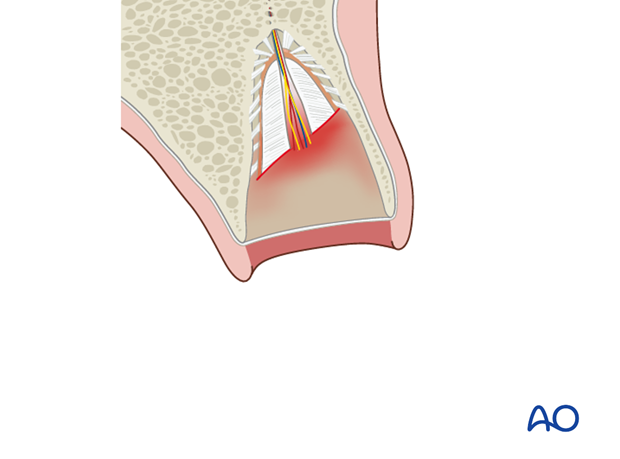
2. Repositioning
Principles
Almost all root fractures can be treated successfully by timely repositioning and splinting.
The exposed root surface of the displaced tooth is cleansed with saline solution.
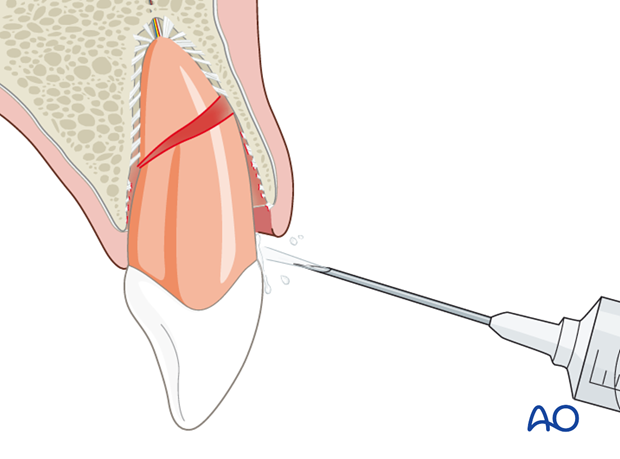
The tooth is repositioned with light axial digital pressure until its normal position has been reestablished.
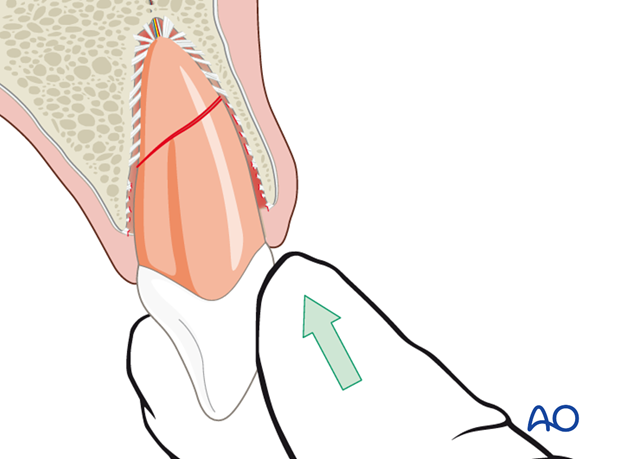
3. Fixation
Splint application
Fixation is preferably accomplished with acid etch of the incisal enamel and application of a resin splint involving intact neighboring teeth. The teeth involved are gently dried with compressed air (as illustrated) or absolute alcohol and kept dry during the fixation procedure.
A finger on the lingual aspect of the tooth can maintain tooth position during the fixation procedure.
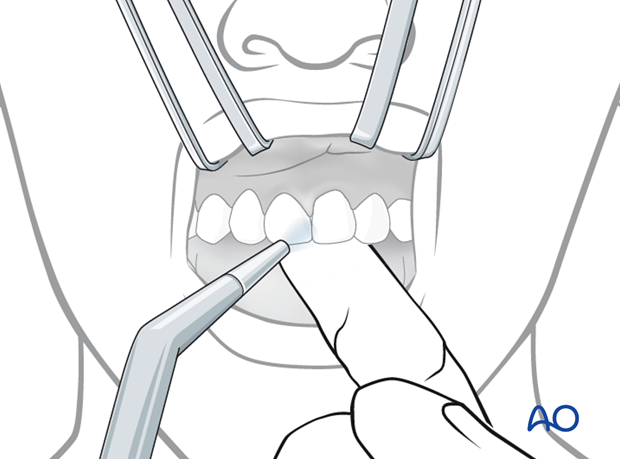
Points of fixation in the repositioned tooth as well as neighboring teeth are etched with phosphoric acid for 20 seconds.
Remember to place a suction tube to maintain dryness during etching procedure.
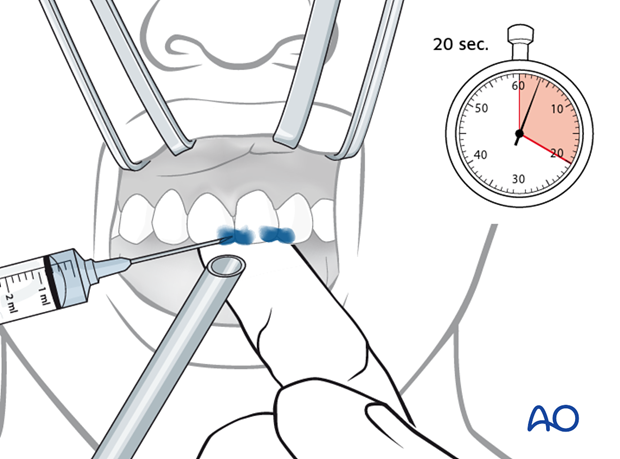
The etch gel is removed by saline irrigation. Make sure to direct the saline jet in a direction away from soft-tissue wounds and to place a suction tube to remove the spray of the saline and etch gel.
The fixation spots are then dried.
It is imperative that the enamel be kept dry until the resin has completely set.

Resin material (eg, used for temporary crowns and bridges) is applied to provide a splint. This material allows a certain flexibility of the splint and is easy to remove.
In the case of a root fracture fixation should remain for 4 weeks.
Note: care is to be taken that there is no occlusal loading to the coronal fragment.
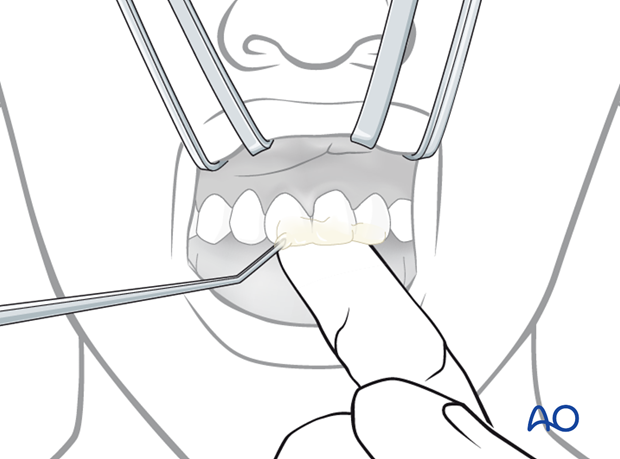
Splint removal
After the fixation period (generally 4 weeks) the resin can be peeled off with a dental scaler or removed with a burr. The tooth must be supported by axial digital pressure during this procedure.
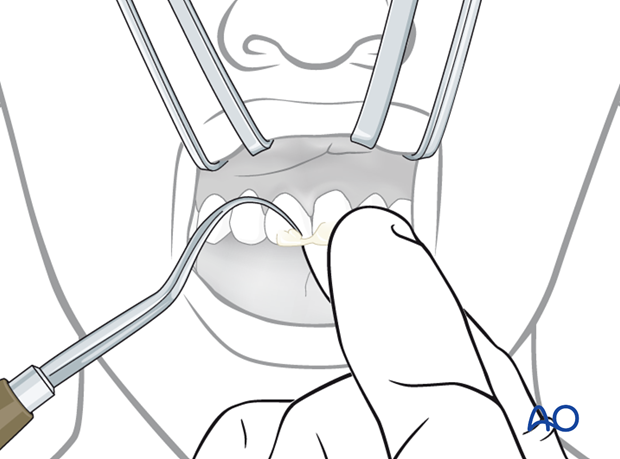
4. Aftercare following treatment of root fractures
Aftercare may include endodontic treatment of the coronal fragment only if pulp necrosis develops. The decision for endodontic treatment may be taken after 2 months follow-up if the tooth still does not respond to electrometric or thermal pulp testing and if x-rays show radiolucency next to the fracture line.
Diet
Patients are encouraged to restrict themselves to a semi-solid diet and avoid clenching and any other traumatic overload to the traumatized tooth for a period of 1 or 2 weeks posttrauma.
Further treatment
Further dental treatment may be necessary as elective procedures, for example management of discoloration, cosmetic corrections, porcelain restorations, etc.













